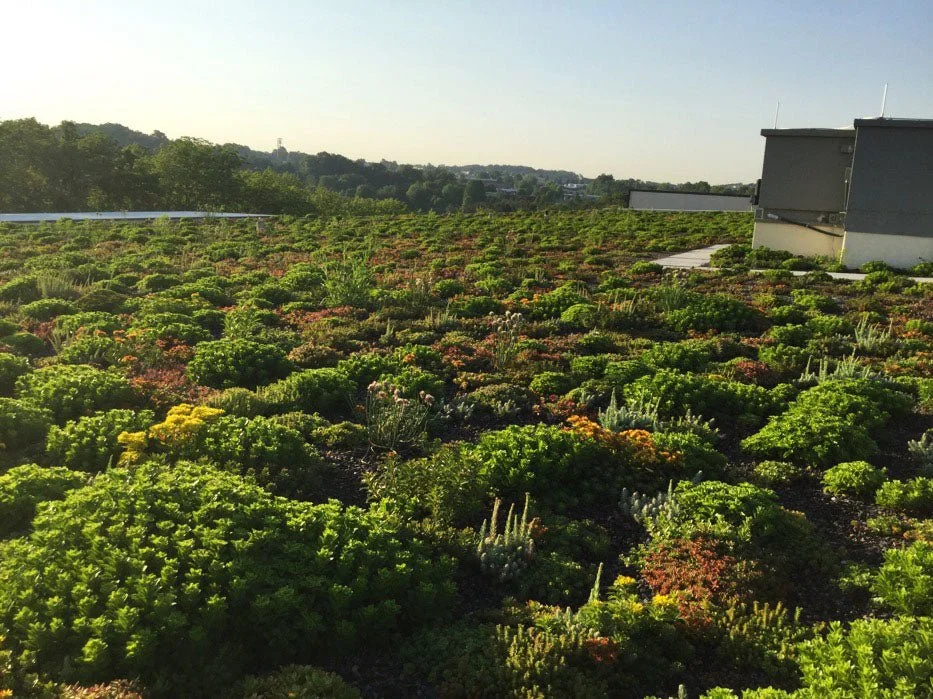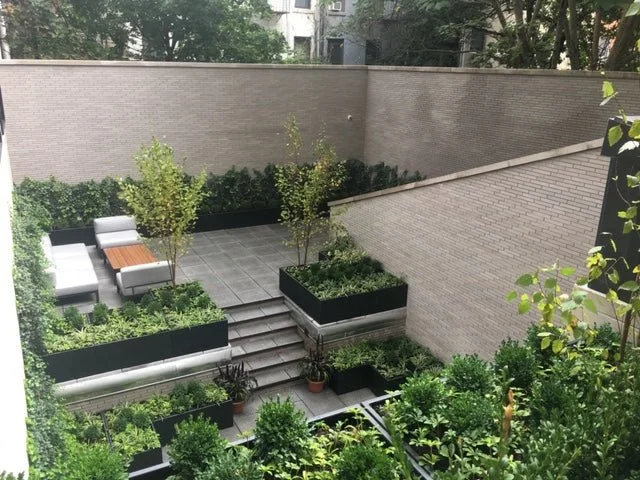Why Is Soil Important to Plants?
In addition to serving as an anchor for a plant’s root system, soil holds nutrients and water that support life in any plant. And that’s just scratching the surface of the many essential functions soil provides for plants.
So it’s no surprise that the type of soil you choose will greatly impact the final result of your next planting project.
The experts from PureModern have put together a few facts about the importance of soil and how to choose the right soil when incorporating plants into any landscape design project.
Rooftop Plantings by Furbish at National Cancer Institute Rockville, MD
The Importance of Soil to Plants
Adding plants to our indoor and outdoor spaces has a multitude of benefits. However, for plants to deliver these benefits, providing them with the right soil is extremely important.
Similar to a well-structured foundation when building a home, the right soil is important for plants in so many ways:
Develop more robust root systems. Healthy soil can increase root volume. When roots grow in healthy soil, they are able to penetrate deeper into the soil and, as a result, are protected from disease and more likely to tolerate and withstand damage. Roots growing in quality soil are also more efficient when it comes to absorbing nutrients and water.
Support the environment. The right soil can efficiently filter rainwater and properly manage how excess rain is discharged. As a result, quality soil can positively impact the environment through minimized erosion, flood prevention, and improved groundwater
Produce stunning and sustainable landscape solutions. For our clients, the end goal is a successful landscape design project. Quality soil is an absolutely essential component for that kind of success. An added benefit of healthy soil is achieving a synergistic relationship for the planting environment, plant health, and ongoing maintenance.
How to Choose a Good Soil for Plants
Soil impacts how well your plant will be able to use water, oxygen, and nutrients. For this reason, take your time choosing the right soil.
Types of Soil
Whether you’re planting in the ground, a raised bed, or a planter, it’s a good idea to begin by understanding the six main types of soil.
Clay soil: With a lumpy sticky feel, clay has few air pockets and is, therefore, not the best for drainage. If you can overcome the drainage challenges, however, clay is often rich in nutrients and, as such, is ideal for perennials, ornamental trees, and shrubs.
Sandy soil: Gritty to the touch, sandy soil will drain well but dries out quickly and therefore holds onto fewer nutrients. Mulching can help retain moisture in sandy soil. Plants that thrive in sandy soil include shrubs, bulbs, sun roses, and hibiscus.
Peaty soil: Typically darker with a damp, spongy texture, peaty soil contains fewer nutrients. Peaty soil retains water, which can create drainage issues. Certain plants will thrive in peaty soil. Try rhododendron, azalea, and lantern trees.
Loamy soil: This fine-textured soil is a combination of sand, clay, and silt. Because it typically retains moisture and drains well, it is a popular choice. Topsoil is often loamy soil. Perennials, shrubs, and climbing plants like wisteria often do well in loamy soil.
Chalky soil: Chalky soil tends to be rather “stoney” and contain large grains. Although plants like trees, shrubs, and bulbs can do well in chalky soil, you may need to fertilize in order to balance the pH levels.
Finding the Correct Soil
When designing a planting plan, you’re likely working with existing soil. If this is the case, begin by identifying which type of soil you’ve got. If the soil isn’t ideal for the plants you’ve chosen, it is possible to adjust your soil. A few options include:
Using fertilizers and other materials.
Tilling in other types of soil.
Or you can always lay down a layer of topsoil.
If you’re filling a planter, that’s a different story. In this case, you can select the ideal potting soil for the plants in your design plan.
Potting soil should contain a proper mix of ingredients that will oxygenate and nourish the plants, while also providing the right amount of drainage for the plant.
Take a look at the ingredients. Most plants will do well in potting soils that contain peat, some shredded pine bark, and aerating minerals like perlite or vermiculite. If you’ve got a particular variety that requires something special, specialists at your local nursery should be able to point you in the right direction.
Connect Modular Planters at 613 Baltic in Brooklyn, NY
Learn More
Learn more about optimizing your planting options by requesting a quote today. Our experts will be happy to help you.
We manufacture our planters with a commitment to quality and deliver a best-in-class experience for our customers. We’d love to partner with you on your next design project. Give us a call at 1-866-430-4245, or fill out a custom quote form, and let’s get started.



